24 February 2022
Measuring greenhouse gas fluxes in the agricultural catchments
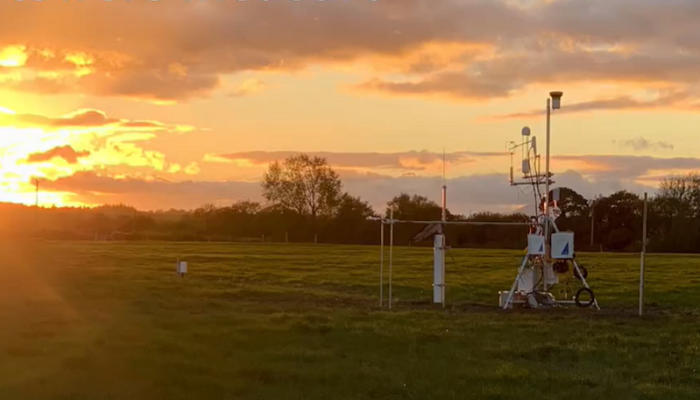
Under the Climate Act 2021, Ireland must cut its greenhouse gas (GHG) emissions 51% by 2030 with a 22-30% reduction required from the agricultural sector. Macdara O’Neill, Gaseous Emissions Researcher, Agricultural Catchments Programme, measures greenhouse gas fluxes in the agricultural catchments
The three main GHGs are carbon dioxide (CO2), nitrous oxide (N2O) and methane (CH4) and each differ in their ability to trap heat and reside in the atmosphere. One of the ways of reaching these targets is to off-set our sectoral emissions by increasing carbon sequestration i.e., the removal of CO2 in the atmosphere by plants and its long-term storage in the soil. How much carbon can be stored in agricultural soils and how soil carbon storage capacity varies by land use and soil type is still relatively unknown for agricultural fields in Ireland.
Eddy covariance flux tower
We can measure atmospheric gas concentrations by the eddy covariance technique as illustrated in Figure 1. This technique uses high-resolution gas analysers (1) to measure the instantaneous CO2 concentration from the air. Readings are taken 10 times per second all year round. Instruments are assembled on a flux tower which also includes a sonic anemometer (2) to measure wind speed and wind direction, and instruments to measure the meteorological variables at the site (3-7). Atmospheric CO2 concentrations are the balance between CO2 uptake via photosynthesis and CO2 release via respiration and the net exchange of CO2 will depend on factors such as vegetation type, weather and land management.
For example, in the Castledockrell catchment, we observed contrasting CO2 flux patterns between a winter wheat crop and a zero-grazed ryegrass-clover pasture in (Figure 2) with rapid daytime CO2 uptake by the crop compared to a more balanced flux pattern in the grassland. The cumulated flux rate gives net uptake of -82.8 g C m-2 in the crop and a net release of 35.4 g C m-2 in the grassland over this six-day period. Currently, the grassland is emitting more CO2 than it is absorbing but we may also see a flux reversal once growth rates increase during spring. Daily CO2 fluxes will also differ between the two systems in summer as the crop approaches harvest and photosynthesis ceases, whilst the grassland may continue to absorb CO2.
Five towers will be operating across four agricultural catchments by April 2022. Longer-term flux measurements will give a clearer picture of how carbon balances vary between contrasting agricultural land uses and help us improve the estimates of carbon sequestration for our national inventories.
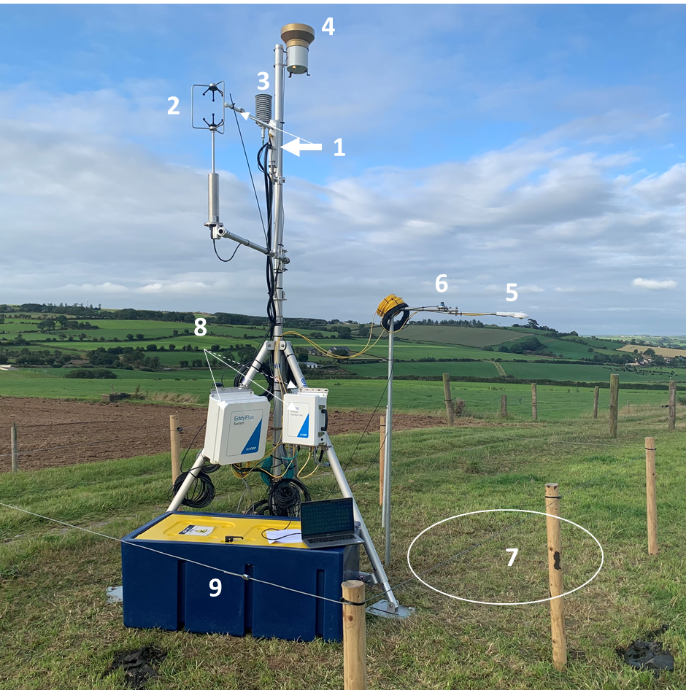
Figure 1: Eddy covariance flux tower installed in Timoleague, Co. Cork with the (1) enclosed path CO2/H2O gas analyser + inlet tube, (2) 3D sonic anemometer, (3) Humidity and temperature sensor, (4) rainfall gauge, (5) net radiometer (shortwave + longwave radiation), (6) quantum sensor, (7) 3 x soil heat flux plates and soil moisture/temperature probes, (8) biomet enclosure, analyser interface unit (AIU) and flow module (at back), and (9) battery pack.
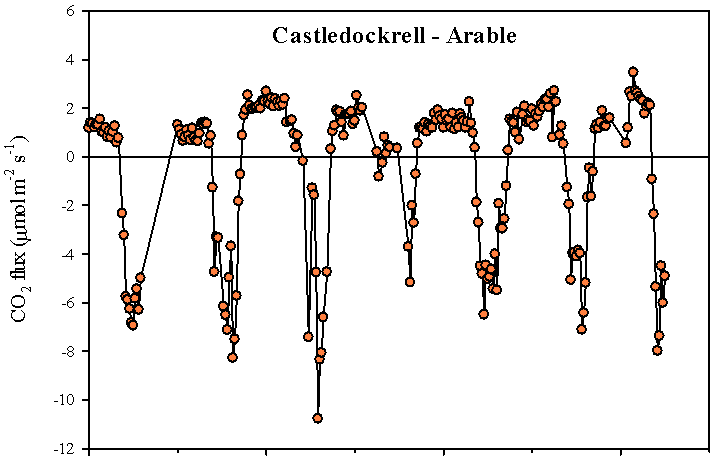
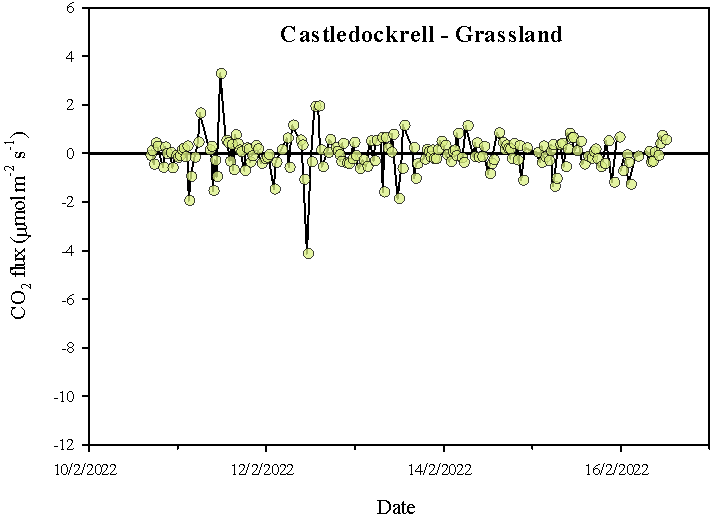
Figure 2: Half-hourly carbon dioxide fluxes in a winter wheat field (upper) and zero-grazing pasture (lower) over a six-day period (10th – 16th February 2022) in the Castledockrell catchment. Data points below the horizontal line indicate uptake of CO2 whilst above the line indicate emission of CO2.
In this short video clip below, Macdara O’Neill, Gaseous Emissions Researcher talks of the new gaseous emissions research in the Agricultural Catchments Programme.
Further information
The Agricultural Catchments Programme (ACP) is running a week of social media releases showcasing some of its activities from Monday 21 February to Friday 25 February. The week’s theme is “Working Together for Water Quality”. More details of what is on can be found at www.teagasc.ie/ACPweek22
Acknowledgement
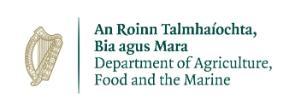 The Agricultural Catchments Programme (ACP) was established in 2008 and is funded by the Department of Agriculture, Food and the Marine
The Agricultural Catchments Programme (ACP) was established in 2008 and is funded by the Department of Agriculture, Food and the Marine
